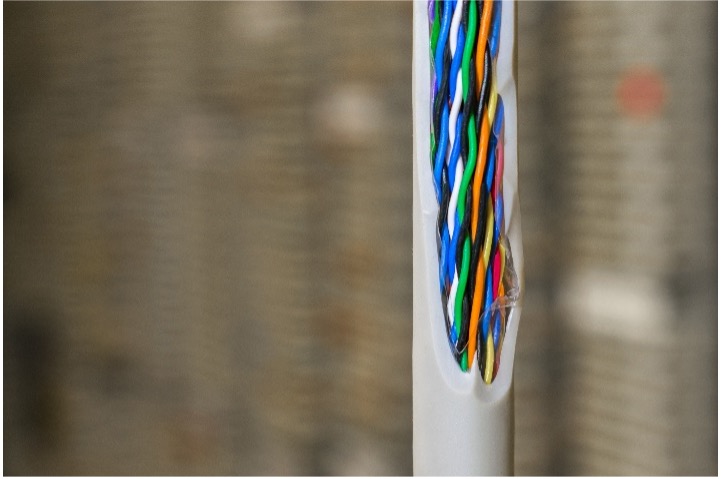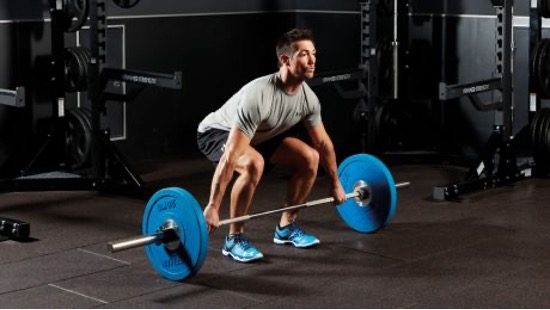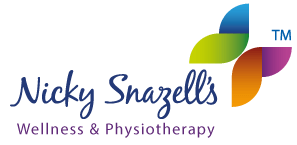In parts 1 and 2 of this pain relief series:
Your Pain Relief Plan Introduction
I discussed why we feel pain and how the degree of pain felt due to lifestyle factors could vary widely from one individual to the next. Also, when long term, typically over 3 months, the brain would effectively lock the pain in. Emotional trauma, even as far back as childhood, had been found to lock in pain for almost a lifetime.
I then went into more detail about how pain works and discussed the implications of ageing and the differences between acute and chronic conditions, and the most effective ways of treating these.
With this as a background, we will now explore the causes of nerve-related neuropathic pain and how it gets locked into the body. This in turn clarifies why exercise and /or some drugs may not be the correct pain relief solution when suffering neuropathic pain.
 We have explained that the pain signal is passed through the nervous system up to the brain. As an analogy of a nerve cord, imagine a tight bundle of tiny electrical wires and that each one of these wires is connected to a specific part of the body. Imagine, as an example, an injury and inflammation to your foot and that one such ‘wire’ is connected to a very small part of that injured area. It will send a pain signal to the brain, and of course, the brain knows exactly where the wire is connected in the body. The result is you will feel pain in your foot.
We have explained that the pain signal is passed through the nervous system up to the brain. As an analogy of a nerve cord, imagine a tight bundle of tiny electrical wires and that each one of these wires is connected to a specific part of the body. Imagine, as an example, an injury and inflammation to your foot and that one such ‘wire’ is connected to a very small part of that injured area. It will send a pain signal to the brain, and of course, the brain knows exactly where the wire is connected in the body. The result is you will feel pain in your foot.
Now let’s go one stage further. That nerve bundle travels down your spine until it reaches the point at which it exits the spinal cord and passes down your leg to your foot. Imagine I could find that exact same wire in your spine. If I were to squeeze it, your brain would interpret that as a pain signal linked to your foot. You would feel exactly the same foot pain, but the problem this time is in your back. You may or may not have a real problem in your foot, but you would still feel pain in your foot.
Long-term pressure on a nerve will cause it to become super-sensitive and send pain signals even when there is no injury
Now, let’s go another stage further again. Imagine that nerve in your spine had previously been strangled for a period of time by a tight muscle contracture. Extended pressure on a nerve will cause it to function incorrectly and it will become ‘super-sensitive ’. That nerve will now send pain signals to the brain even when there is no current injury. In effect, the previous injury is locked in. Imagine a faulty wire having a similar effect.
’. That nerve will now send pain signals to the brain even when there is no current injury. In effect, the previous injury is locked in. Imagine a faulty wire having a similar effect.
Pain like this is called neuropathic pain because the nerve is super-sensitive.
The Do’s and Don’ts of Exercise
It’s not necessarily the case that exercises are appropriate at the start of treatment, as in some cases exercises, incorrectly timed, will make matters worse, not better. Neuropathic pain resulting from a trapped nerve is an example where exercises should not be given until the trap has been removed, allowing the nerve to move freely.
As an analogy, imagine I grabbed your wrist so hard that it hurt. Your reaction might be to try to pull your arm and wrist out of my grip. But if my grip is too strong, all that will happen is that your arm will ache and your wrist will be very sore. Yanking on a trapped nerve by exercising will have the same result. Exercise prescription needs to wait until the nerve is no longer trapped.
The Pro’s and Cons of Pain Medication
Pain may be a signal that something is wrong, but at best it’s not pleasant and at worst it can prevent normal daily living. If long term, it can cause depression and a loss of will to live. Thus, medication is an important part of our arsenal to control the pain until the cause of the pain has been established and then successfully treated.
There are, however, downsides to medication. The first and most obvious is that the medication works by masking or blocking the pain signals and does not treat the actual cause of the pain. Further, by masking the pain, it prevents us from getting the warning that something is wrong. Thus, we may continue to do the very things that the pain is trying to warn us not to do. If used long term, medication may, as a consequence, exacerbate the problem.
Opioids are ineffective in treating chronic pain
Secondly, when the pain level is severe, opioid based drugs are often prescribed, with no differentiation between acute and chronic conditions. The problem here is that chronic conditions will most likely need long term medication and opioids are naturally addictive. In fact, so much so, that opioids have caused the majority of drug addictions in the USA. To make matters worse, opioids have been recognised for some time as being ineffective in treating chronic conditions.
Thirdly, most drugs have negative side effects and long-term use can be dangerous.
To summarise, trapped nerves will cause neuropathic pain, a form of locked in pain which in itself can be misleading, as incorrect diagnosis could lead to treatment of where the pain is perceived, instead of where the cause of the problem resides.
It thus should come as no surprise that exercising, which will mean pulling on nerves to allow movement, will only make matters worse if those nerves are trapped.
Drugs are an effective short term solution, but care should be taken to avoid opiates when dealing with chronic conditions, as it is well proven that opiates are ineffective in such cases.
In the next part of this pain relief series Your Pain Relief Plan Part 4 I will discuss the assessment and the scientifically proven importance of holistic factors.
Call 01889 881488 Now
p.s. Don’t try to book online at this time as that is only suitable for existing clients already being treated for an existing problem.
How to avoid Tennis injuries:
- Make sure you play on a non-slip court, not too cold, with good footwear and tennis clothes and a quality racket and balls. Having well-made clothes and equipment will all reduce the chance of injury.
- Reduce the total amount of weight-bearing exercises you do. Do some cross-training to reduce impact loading while still maintaining training volume.
- Light meals only, with a good fluid uptake, and make sure you are well-rested pre-game.
- Mix training sessions with different activities, for example, cycling and swimming.
- If you want to be very serious about tennis, set up a training diary recording rest days, sleep, heart rate, and heart rate recovery time.
Tennis Top Tips
- Practise hitting the ball in the ‘sweet spot’ of the racket. The shot feels good and the impact force will be at a minimum.
- Improve your stroking technique – especially backhand.
- Modern rackets do not absorb shock like the old ones, so to
reduce the impact on your arm:
◊ Lower the string tension.
◊ Increase the flexibility of the racket.
◊ Increase the racket head size.
◊ Add lead tape to the head to increase weight.
◊ Increase the grip size. The optimum grip circumference
equals the distance from the tip of the ring finger to the
crease in the middle of the palm (proximal crease).
◊ Grip higher up on the handle than you probably are.
◊ Loosen your grip on the handle.
- Play on an appropriate surface. If you play on a hard surface, the forces through the joints are much higher: twice your body weight when walking, 3 to 4 times on running and 12 times on jumping. Very dry and hard surfaces can also cause twisting ligament injuries to the knees, due to the increased friction between your shoes and the ground.
- Get a biomechanical assessment with us, and if you need them, purchase bespoke high-quality orthotics. Make sure your footwear is appropriate.
- Train at an intensity lower than competitive, add in more relaxation time, and spend more time on cool down post activity.
- Eat healthily and adjust your calorie intake to your activity level. Take carbs for fuel, protein for rebuilding muscle, high-quality vitamin and mineral supplements, and make sure you drink plenty of water.
- Enjoy the stress relief that exercise can bring, and don’t force yourself if you are exhausted, as this is when you are most likely to get injured.
- Get regular sports massages to remove trouble spots before they become injuries.
Warming Up and Cooling Down
Warming up is often overlooked and should be part of your injury prevention routine, as there are a number of benefits:
• The muscles work better when warm and oxygenated with good blood flow.
• The joints become more flexible which reduces the pull on the muscles.
• The nervous system becomes more responsive.
Including a gentle jog in your warm-up will give the muscles the energy supply they need to work properly. Follow this with sport-specific exercises and dynamic, sport-specific stretching drills – this regime has largely replaced old-fashioned static alternatives. Examples of tennis-specific exercises are running for 5 to 20 minutes with your heels up to your buttocks or with high knees up to the hip level. Increasing the size and speed of movements
– as the body warms up and the heart rate increases it will more closely simulate competitive conditions. It is also important to focus on full body conditioning, as predominantly one-sided sports – such as tennis – can cause muscle imbalances.
You should allow a total exercise and stretch time of 15 to 30 minutes and no more than 30 minutes before competing, otherwise, the benefits will be lost. Cool down should include a gentle jog plus light stretching. to help reduce muscle soreness.
If you want fewer injuries, improved fitness or a plan to get you there,
we can help.
Do You Need Help With Your Tennis?
Call 01889 881488 NOW
Jean, Erica and Charlotte will be happy to help.

Commonwealth Games 2022 - Birmingham 2022
This year's commonwealth games are going to be held in and around Birmingham, and for us, we are particularly keen on the biking event on 3rd August on Cannock Chase, when the cream of the commonwealth bikers descend on Birches Valley.
For those who are not so competitive, the good news is that a new trail has been created for the games, and of course, we get the opportunity to use it long after the games have gone. We also get a new innovative pedal and play area for young cyclists to practice.
It’s a great time to get back to cycling.
 I love cycling and I’m out on the Chase most days. The scenery is great for the soul, just as cycling itself is great for your body. I also have a mountain bike equipped with amazing night lights, so the dark doesn’t stop me either.
I love cycling and I’m out on the Chase most days. The scenery is great for the soul, just as cycling itself is great for your body. I also have a mountain bike equipped with amazing night lights, so the dark doesn’t stop me either.
If you’re new to cycling, ensure you get your saddle in the right place, as it greatly affects how comfortable you are and how much power you can exert. To find the best position you need some help, as it requires adjusting the seat height until you have about a 25 to 30-degree angle between your thigh and lower leg, when your pedal is at its lowest position. Don’t get into the habit of having a sloppy back posture – it will hurt you.
What can you do to help stay safe while cycling?
Make sure you wear protective clothing and use both brakes – there are many hills over somewhere like Cannock Chase, and unfortunately, coming off is very easy to do. On gravel, you need to use more back brake (left handlebar) than front (right handlebar), as locking the back is recoverable, but locking the front is more likely to cause a fall. Take a mobile and repair kit, just in case. I’d advise installing the What 3 Words app on your mobile because if you do get injured, emergency services can locate you to within 3 metres anywhere on the planet.
How to avoid muscle problems from cycling
To avoid problems with cycling, you need to address some muscle imbalance issues. Hip flexors, hams, and quads get strong, bottom muscles (the gluts) get weak, shins get tight, ankles get overused, a round-shouldered position gives tight pectorals, and traps can irritate nerves in this area. Also, the lumbar spine does not like the lengthy flexed position with a stiff pelvis.
It’s thus a good idea to train different muscle groups with activities like walking, Nordic pole walking, jogging and swimming. This helps avoid injuries caused by overusing and inflaming some muscles whilst others get weak, a combination which leads to joint instability.
I use specific exercises to help overcome these problems. We can help you with these and create a plan for you at the clinic. Call us on 01889 881488 if you need help.
To ride pain-free with good strength and mobility, you must be confident. Confident you can corner and stop safely. If you are new to cycling or have taken a break and want to get on the saddle, then its wise to build that confidence slowly, riding on the flat and initially just short distances. If you really struggle with cardiac fitness or general arthritic pains, then starting gently is even more important.
Don’t forget the basics - in the hot weather, make sure you take plenty to drink with you.
If you struggle to keep up within a cycling group or with your cycling buddy, then you could consider an E-bike, which provides different levels of power assistance and dramatically increases the potential range of any single ride. I’ve got one. It’s brilliant!
If you are not getting as much out of riding as you would like or are suffering muscle problems that interfere with your fun and enjoyment of riding, then it’s always wise to seek help from an experienced physiotherapist or sports therapist. They can then identify problem areas, provide treatment and devise improvement programs, providing support and motivation along the way.
Do You Need Help With Your Cycling?
Call 01889 881488 NOW
Jean, Erica and Charlotte will be happy to help.

- Why isn’t it enough just to do aerobic exercise?
- Why should we go to the gym or use weights at home?
- Why do you need to get some muscle?
First, let’s look at some sobering facts:
- In the mid-1980s, biochemists established that muscles were essential to immunity, as glutamine was manufactured by muscles and glutamine was the key to the immune system
- From 20 and 80 years old, females lose on average 8 lbs of healthy muscle and gain 23 lbs of excess fat.
- From 20 and 80 years old, men lose a quarter of their muscle mass, and a lot of their immunity to diseases follows this.
- In a study of 2,300 people over five years, the University of Pittsburgh found that those with low quads strength were 51% more likely to die. A second study looked at both age and quads strength, and they found that you were 13 times more likely to die with weak quad A sobering fact.
Do you want to lose more fat and look younger?
In a ten-week study by Neil McCartney, it was shown that using weights, a form of resistive exercise, is part of the answer. In this study, inactive females who had an average of 21.8% fat were split into two groups (McCartney, cited in Colgan, 2005). Some of these ladies were advised to follow only an aerobic exercise regime, and the others had resistive exercise using weights added to their regime. Those using weights achieved a greater fat reduction of 7.1%, compared to those not using weights who achieved only 5.6%.
In another study (Willis et al 2012 J Appl Physiol) they concluded that resistance exercise was more effective for muscle mass gains, aerobic exercise was better for fat loss. If increasing muscle mass and strength was the goal, resistive exercise must be included in the program.
Other studies went have shown that resistive exercise boosted human growth hormone, testosterone, and DHEA, which were all anti- ageing and immunity boosters. Furthermore, when this happens, the stress hormone goes down, slow wave sleep is boosted, and so is bone strength.
Here’s a starting point for all you beginners out there who want to try a resistive exercise:
It’s best to limit yourself to a maximum of 45 to 60 minutes in any one session, and if you have a busy day, even doing several sessions in 15 minute blocks will add up and make all the difference. You need to work different muscles with different exercises, and even with the same muscles, you need to vary the intensity and the type of exercise in order to constantly challenge your muscles. One way of doing this is to write down a list and put them in a jar. You can then randomly pull out different ones to stop boredom from creeping in – something that my personal fitness coach at the clinic suggests doing. I would add to this that I’d like you to group lower limb, back/stomach, and upper limb exercises in order to allow the necessary recovery for your muscles to repair themselves.
Studies show that improved muscle strengthening comes from including eccentric loading (which is loading the muscle as its fibres lengthen rather than as they shorten). If this all sounds a bit complicated, then call us on 01889 881488. We can help make sure you are doing the right exercises at the right time and in the right way. Make sure you never overstrain, though, because inflammation isn’t good. Damaged muscles will take five to eight days to repair and strengthen.
I teach my patients very specific exercises for their specific injuries. However, here is a simple general guide:
- Start by doing an aerobic action, either by using a lightweight with 8 to 12 reps, or just a warm-up exercise.
- Then work the chosen muscle with a stronger 8 to 10 repetition, pushing yourself to near exhaustion by the last one.
- To work a selected group of muscles, leave a minimum of 48 hours in between for healing.
- Take a protein drink an hour after a hard workout. Before a workout, take some glucose and hydrate well. Keep an alkaline diet, as muscle work will enhance an acidic environment.
Muscles have two types of fibre: the slow and fast twitch, the former working hard during aerobic activity, and the latter in explosive actions and weight training. Unlike the constant supply of energy generated during aerobic exercise, the fast twitch can only grab energy in the muscle, hence short bursts of exertion only, before its short battery life is effectively over.
Another factor is your body type, as this will impact your response to training and the diet you need to follow:
- Ectomorphs are those irritating friends who eat everything and stay looking slim in clothes, as it is more difficult for them to build muscle.
- Endomorphs are heavier; they put weight on more easily and have to diet. They can build muscle, but it is often buried under the fat, making them look bigger. Aerobic workouts are essential here – that or big pants!
- Mesomorphs, on the other hand, have an athletic build, narrow waist, and broad shoulders. They build muscle easily, although they have to diet as well.
Patients ask me how heavy, how often, and how long for, and the key here is to follow a guided program of specific coordinated exercise, as muscles will strengthen faster and with less weight.
I found that my maximum dumbbell weight for toning was to do between 12 and 15 reps comfortably then go hard with the last 3. Then, I had to take a break before the next set. When you want to bulk up a muscle, it’s the handful of hard reps that do the breaking down and rebuilding action – not particularly kind to your body. Needing to continue that feeling of toning to get gently stronger means that you have to gently increase the weight, which is a rewarding and positive thing to do. Toning means high reps of 15 or more, low exertion and only 30 seconds are needed between sets. When defining, you need to make more of an effort to do 10 to 14 reps before muscle fatigue, with only a minute to recover, then repeat. Building and stressing muscles means fatigue at a max of 10, pushing into pain for an extra couple of reps, and a minute or two’s rest is essential. After injury, the first set is the first to be attempted.
Pushing your strength – rather than toning – means using a weight that you can just move a maximum of 4 to 8 reps, then resting a minute or two minutes per set. The latter will lead to muscle soreness, repair, and bulking. A good time to consider Sports Massage.
Free weights involve more body control and are, on the whole, more effective. I tend to work opposing or different muscles to fill the rest of the time in with an exercise for a different muscle, and it also allows more recovery time, as I don’t want muscle soreness hindering me afterwards.
If you want to reduce fat and increase your strength and need to be guided to ensure the best results while minimizing the chances of injury, then call us.
We can help.
Do You Need Help With Your Running?
Call 01889 881488 NOW
Jean, Erica and Charlotte will be happy to help.
Ask to see Anton, Katie or Dean

What I have learnt whilst working with athletes is that runners are the most determined, there is no stopping a runner from running. There is no such thing as a day off… they just run all year round.
This means that injuries such as stress fractures, plantar fasciitis and overuse injuries become very common, and generally get worse without treatment or rest. This, however, doesn’t stop a runner. It is thus important to implement pre-rehabilitation strategies to prevent injuries from occurring in the first place, so sports therapists don’t have to pull the short straw and do the uncomfortable task of telling a runner to minimise their running.

Here are some of the things a sports therapist can provide that will help to minimise the risk of injury and enhance your running performance.
Prehabilitation, what is it?
Most of us know the importance of rehabilitation following surgery to restore physical strength and function. However, many will be confused with the concept of prehabilitation aka pre-hab. Pre-hab is designed to prevent injuries by taking care of weaknesses ahead of time to stop them from evolving. Why bother? Some may ask, but once injury hits, the regret sets in, and you wish you had spent that extra time looking after your body. In addition, studies have shown that those who incorporate pre-hab into their daily activities regain full function faster and more easily than those who don’t prehab before the injury.
Sports Massage
Sports massage is a must for runners. It not only breaks down fascia (connective bands of tissue) but also helps improve overall running performance by increasing blood flow and oxygen to the muscles and helping remove metabolic waste such as lactic acid. This helps to maximise training, increase range of motion, and increase muscle energy activity. It also helps to maintain overall muscle health by identifying areas of tension and addressing them before an injury occurs.
Sports massage helps create an overall sense of wellness as it releases chemicals from the brain and can induce a state of relaxation, which can also help with sleep. Sleep is vital for recovery.
How often should you have sports massage?
If sports massage is undertaken regularly, it is easier to detect variations in the soft tissue. Muscle imbalances can be corrected before they become serious enough to cause discomfort. Advice will be given on how to maintain yourself between massages to prolong the benefits of the treatment.
Having regular monthly maintenance is a great place to start. However, if you are new to massage, don’t schedule it too close to an event just as you wouldn’t test out new running shoes or socks too close to a big event.
Sports massage is like an MOT for your body… it’ll keep you ticking over, stop you getting too tight and prevent niggles from turning into injuries.
Incorporating strength training into a running program?
Absolutely! For a runner, it is so important to strengthen your lower body and core. If you run all the time and do nothing else, you build up a few muscle groups, such as quadriceps and calves, whilst not really strengthening other areas. Unfortunately, long-distance running tends to leave out the posterior chain of the body, leaving muscular areas that are very important for speed, such as the hamstrings and the glutes, undeveloped. This means that you’re potentially losing functionality and will begin to develop muscular imbalances that will ultimately lead to injury. Stronger muscles can also act as a shock absorbers, which can reduce the load on the joints. Strength training not only reduces the likelihood of muscular imbalances, but it can also help to improve your endurance, speed and enjoyment as well as improve bone density which will reduce the likelihood of stress fractures.
Strong Body= Strong Runner

In summary, you can’t tell a runner to minimise their mileage. It’s vital, therefore, to avoid nasty injuries before they happen through rehabilitation, massage and strength training and thus maximise your chances of reaching your long-term running goals.
Do You Need Help With Your Running?
Call 01889 881488 now
Erica, Jean and Charlotte will be happy to help
If you’re looking to boost your running performance, why not try a sports massage. Regular massages are a runner’s MOT for the body. As a runner, you put so much effort into your training, it’s worth putting effort into taking good care of your body too.
It Works
There is a reason that top athletes have regular massage and the reason is it works. It helps them achieve their best with less pain and more flexibility. The same goes for the GPs in countries like Germany, where a course of massage is prescribed before drugs. Why? Because it works.
If you would like to get these same benefits for yourself, then please call the clinic now and book an appointment with Katie.

First, decide what your fitness goals are!
Patients often ask me, once their general fitness is much better, “How do I take the next step to train towards a specific sport?” Firstly, any current injuries should be assessed by an experienced physiotherapist or sports therapist. Then you need to decide on your goals. What are your goals? Stronger heart and lungs? A fit-looking body? To win at sport? To live longer?
Furthermore, you need to decide:
- which sports you want to concentrate on
- how vigorously you want to compete
- how long you want to be able to compete.
Everyone should exercise, but you need to set your personal goals of fitness and your own unique set of aims, as this will determine the most appropriate exercise and productive time you can spare for training. A fitness assessment with a personal trainer can establish your personal fitness goals and an injury prevention program can be formulated to attain your goals:
• Enhanced cardiovascular ability.
• Improved stamina and endurance.
• Better agility, flexibility, and balance.
• Stronger muscles and core strength.
• Slimmer body.
• Stronger bones.
• Clearer thinking and happier moods.
Ten Tips to Achieve Your Fitness Goals
1) Measure your heart rate just after vigorous exercise for 5 seconds, then after another minute for another 5 seconds. Multiply both by 12, then subtract one from the other. This gives you your speed of recovery, which is an indicator of your cardio fitness. As you get fitter, both your oxygen capacity and the ability of your enzymes to remove lactic acid will increase.
2) Mix up slow and fast pace in all activities. Athletes carry out long slow and short fast interval training for a good reason; the slow pace builds stamina and teaches the body how to cope with and eliminate lactic acid, as well as enabling muscles to store more glycogen for prolonged exercise.
3) Fast pace, on the other hand, comprises of short bursts of intense activity which boosts sugar metabolism and teaches the brain to co-ordinate the muscles at a faster pace, helping agility.
4) To avoid muscle injury due to tiredness, rest adequately as muscles need
48 hours to recover, plus good hydration and nutrition.
5) To achieve stronger muscles, lift a weight you can just manage between
8 and 12 lifts in about 50 seconds. Then, rest briefly between sets, as
lactic acid build-up will cause injury. Repeat. Rest a day in between. Add
2.5 kg to 5 kg maximum at each increase.
6) Exercised bones get stronger, so use resistance or weight-bearing exercises.
7) For a thinner body, sustained exertion will burn up calories and speed up the metabolic rate.
8) For a flexible body, complete slow, sustained stretches of 30 seconds when you are warm and pain-free. Stretch before your workout to reduce the chances of injury. Stretching after exercise reduces muscle soreness and promotes relaxation.
9) Clearer thinking is essential. Work out your pattern of mental alertness, the daily peaks and troughs. Plan a regular exercise program and see how it eliminates the ‘valleys’. Exercise-induced endorphins plus serotonin will reduce depression and pain.
10) For running, cycling and walking, get checked out biomechanically.
This means the alignment of foot joints to avoid knee pain, hip pain, and back pain.
A correct alignment will reduce wear and tear.
Do you need help in setting realistic goals, creating a plan and
ongoing help to get you there?
We Can Help
Call 01889 881488 Now.
Jean, Erica & Charlotte will be happy to help
Do you remember studying hard at school to get good A levels? Your dream was to get accepted onto a physiotherapy university degree course, as the idea of helping people to get out of pain and live a higher quality of life really appealed to you. Physiotherapy suited your personality because it was a proven hands-on technique that made a measurable difference. And that was what you really wanted to do, to make a difference and help people.
All that hard work and determination got you the A levels you needed and you were accepted onto the course of your dreams. You started your career in physiotherapy determined to help people.
Now a few years on, as you look back on your career, you can’t help feeling that something is missing. Your dreams are not being fulfilled and more to the point, many of the skills you studied so hard to learn are not being used. You seem to be stuck on this treadmill of seeing patients, knowing you could help more, that you could make a bigger difference to their lives, but not able to as the guidelines are to avoid treatment wherever possible and send patients home with some exercises.
As you reflect on this, you wonder, if you continue this way, how you will look back on your life when you are retired. You realised there is a Grand Canyon-sized divide between your dreams at school and university, and what you were actually doing.
Now is the time to act, not tomorrow, as tomorrow never comes
At Nicky Snazell Clinic, we are 100% committed to providing the very best treatment we can, and it is exceedingly rare for that treatment not to involve hands-on, allowing our therapists to use the finely honed skills they were taught at university and refined in their years since. We of course incorporate exercises where appropriate and send online exercises with video links direct to the client. The clinic is also very well equipped with technology often only available in private practices and all this technology is available to all therapists to use free of charge.
Our therapists are able to devise meaningful treatment plans with their clients which will optimise the degree and rate of recovery from injury or pain and then go on to provide ongoing maintenance where needed to ensure that the improvements made are retained.
We have the luxury of both an excellent in-house MSK training resource, plus world specialist pain relief skills that attract clients from around the world, skills that are also readily taught in-house. Simply put, a combination of learning opportunities that’s hard to match.
Emma joined us as a MSK physiotherapist after 9 years of feeling restricted.
“I was so frustrated seeing patient after patient, never really helping them as much as I knew I could. It was equivalent to be trained to use a complete toolbox, but only allowed to use one tool.
The best decision I’ve ever made was to join Nicky Snazell Clinic. The breadth of their knowledge and skills still blows me away every day.
When I reflect back, I realise how my enthusiasm for being a physio was wilting. Now I’ve found my passion again and I can’t wait to learn something new and know there are no restrictions on me. I can now use every tool in the toolbox to get the best result possible.”
What Are You Going To Do Today?
There is no one right answer and we are all individuals. If the idea of actually treating MSK problems appeals to you, in an environment of total commitment to providing the best hands-on treatment possible, supported by an abundance of latest technology and ongoing learning from the best, then you should consider applying for an MSK physiotherapist role at Nicky Snazell Clinic.
You can be confident you will be applying for an opportunity at a well recognised facility. We have more Google reviews than most near us put together and we are rated 5.0, the highest possible. Our latest client satisfaction score was 93.5% and we have already taken action to address the improvement opportunities identified.
If this opportunity appeals to you, send in your CV and a covering letter to alanc@painreliefclinic.co.uk
Find out more about our clinic at www.painreliefclinic.co.uk
Great news. The sun is shining, and it’s holiday time!
Most of us have been couped up for the best part of a year, probably getting a lot less exercise than normal and possibly desperately needing some treatment for pain. Every year we get a surge of clients who have put their back out and need urgent help to resolve back pain before their holiday. This year it’s likely to be a bigger surge due to the relatively low activity due to COVID dragging on.
We are here to help and we will no doubt be able to get you out of pain in time for your holiday. But it’s important to realise that in most cases we won’t have enough time to completely fix the problem, so you will need to be a bit careful on your much looked forward to holiday.
Here is some simple advice to help you avoid ruining your holiday
First, let’s understand pain a little. When we are in pain, it’s difficult to get it off our minds. But once it’s gone, you can’t remember it, can you? You can remember you didn’t like the pain, but you can’t recreate the pain in your mind. There lies the risk.
Once the pain is gone, it’s forgotten and we feel good. Then we do stupid things and the pain comes back with a vengeance. What is one of the main culprits? Suitcases.

If you think about basic health & safety when picking things up, the rule is bend your legs, not your back. It makes sense, but not easy to do when putting a heavy suitcase in the boot of the car, or fighting to get the suitcase off the conveyor at the airport. Worse yet, one sure way of putting your back out is to lift and twist as the same time. What do you do when you take a suitcase out of the boot? You are in the way, so you twist and put the suitcase down! Ouch, home goal. Now for the Physiotherapy
Stop and think
Try two lighter suitcases instead of one heavy one. Bend your legs putting the suitcases in the boot, or even get two of you to do it. When you take a suitcase out of the boot, avoid twisting, instead rotate on your feet, like a robot.
Be extra careful with airport conveyors. They tend to be a free for all, and fighting to get a suitcase off before it goes past is a sure way to put excessive lifting and twisting loads on your back.
We have had many clients who ruined their holiday before it started. Don’t let that be you.
If you are in pain, we can help
Call 01889 881488 Now
Jean, Erica & Charlotte will be happy to help
A big thank you to those who bought one of Nicky’s books or some of our bespoke jewellery in April. You generated £60 which will be paid into the Red Cross and Blue Cross Charities specifically to help Ukraine.
For those who would still like to help, then we are selling Nicky’s books and bespoke jewellery at bargain basement prices until we no longer have anything to sell.
We guarantee 100% of payments taken will go to these charities to
Help Ukraine
